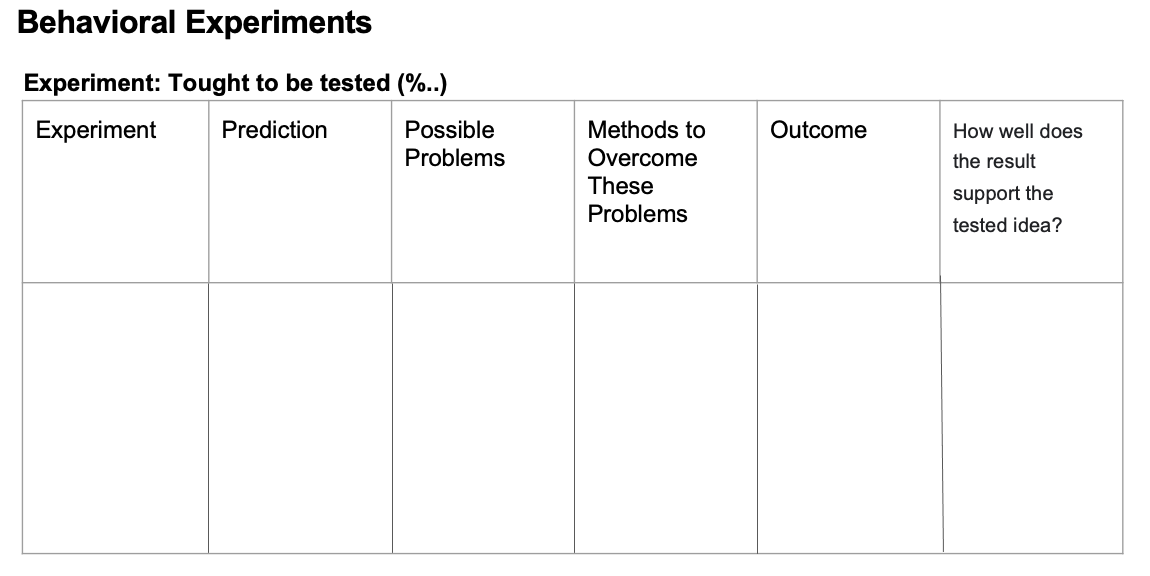Social Anxiety Disorder / Social Phobia
1/6
There's no tags or description
Looks like no tags are added yet.
Name | Mastery | Learn | Test | Matching | Spaced |
|---|
No study sessions yet.
7 Terms
Describe the Cognitive Model of Social Anxiety disorder
Anticipatory & post-event processing:
Continuously thinking about the situation in a repetitive manner (Ruminate)
Active presence of negative thoughts about oneself by others
Does not change perception or interpretation about the situation when away from anxiety-inducing situation.
→ Example: Negative perception/comment about the waiter and other customers present in the restaurant continues after leaving.
Assumption and Beliefs:
When symptoms begin to emerge, the person interprets their performance as unsuccessful.
Therapy: Should focus on how the individual interprets and perceives symptoms arising from anxiety, not the symptoms themselves.
→ Example: “I'll sweat.” → “If I sweat, they'll think I'm stupid.”
Distinctive Features of Social Anxiety:
Desire to leave a positive impression on others while simultaneously believing that one's capacity in this area is limited
Fear of behaving inappropriately and being rejected, leading to catastrophic outcomes such as loss of status, rejection, and being belittled by others
Perceptions of danger leading to physiological, cognitive, emotional, and behavioral symptoms
Which Information should you gather for the Case-Formulation in social anxiety disorders?
Most effective negative thoughts
Most effective negative assumptions
Safety behaviors
Anxiety symptoms: Physiological and cognitive responses
Content of self-awareness: Self-consciousness
Example:
Therapist: How did you feel you came across?
Patient: I felt I appeared very red and sounded stupid.
Therapist: Let's assume that you did appear very red and sounded stupid, what would that mean about you?
Patient: I felt that I looked like an idiot and others would be secretly laughing at me.
Therapist: Let's assume it's true that everyone in the room is laughing to themselves, what would that mean to you?
Patient: I think no one will really want to know me in the future and I'll be alone.
Next, the therapist identifies the autonomic sensations or symptoms of anxiety by asking questions such as: ‘When you thought the feared event might happen, what did you notice happening in your body?’ (e.g. blushing, shaking, sweating).
Safety behaviors are next elicited by asking ‘When you thought the feared event might happen, did you do anything to try to prevent it from happening?’, ‘Is there anything you do to try to ensure you come across well?’ or ‘Do you do anything to stop drawing attention to yourself?’
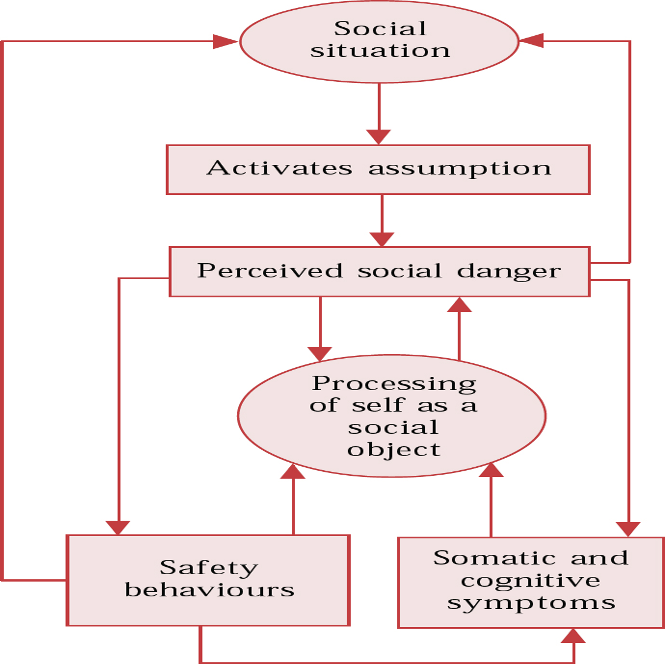
Which Techniques do therapist use to treat social anxiety disorder?
Mainly focus on Therapist-Patient Collaboration first
Focusing on a specific situation
Progressing step by step while maintaining focus
Giving control to the patient
Guiding the patient by using the therapist's affect to increase curiosity
Revealing and measuring the patient's most effective thoughts and moods using imagery techniques
therapist ensures that the patient focuses on the most effective parts of the specific situation through Socratic Inquiry, enabling the patient to notice Negative Automatic Thoughts and initiate Cognitive Processing
Self-Exploration: comparing the Negative Perceptions and Mood Measurements given by the patient at the beginning of the session with those given at the end of the session
Creating a formulation specific to social phobia for the patient
Camera technique
Approach to Social Situation Scale
Exposure Technique (add in-vivo exposures, imaginal exposures can be included when real-life confrontation would be difficult or unadvisable)
Behavioral Experiment to test the thoughts in %
Describe the Camera Technique for social anxiety
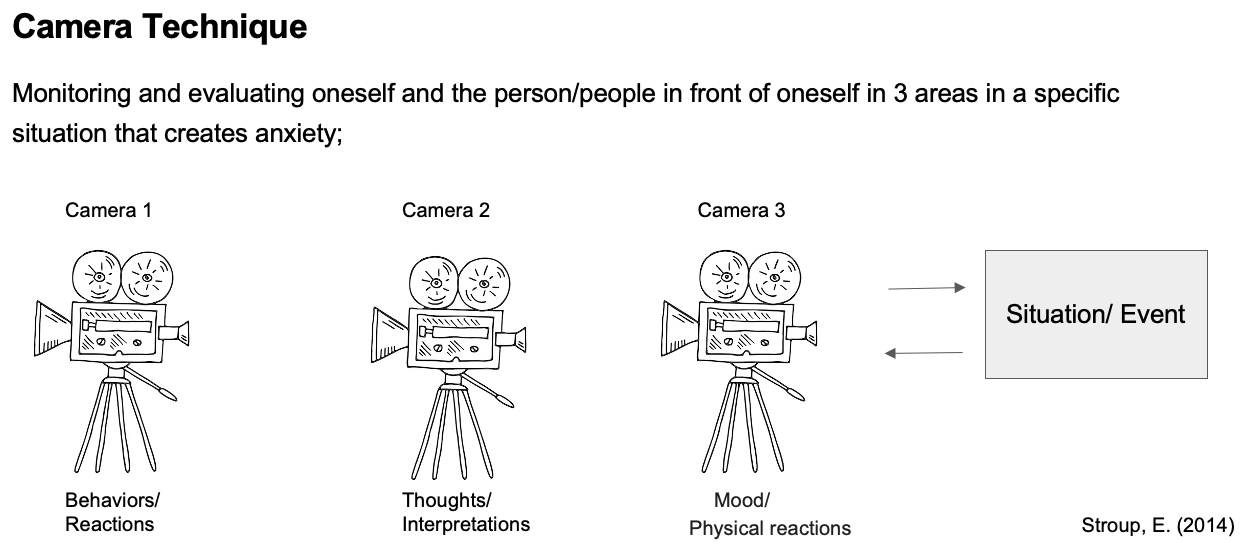
How does the Social Situation Scale look?
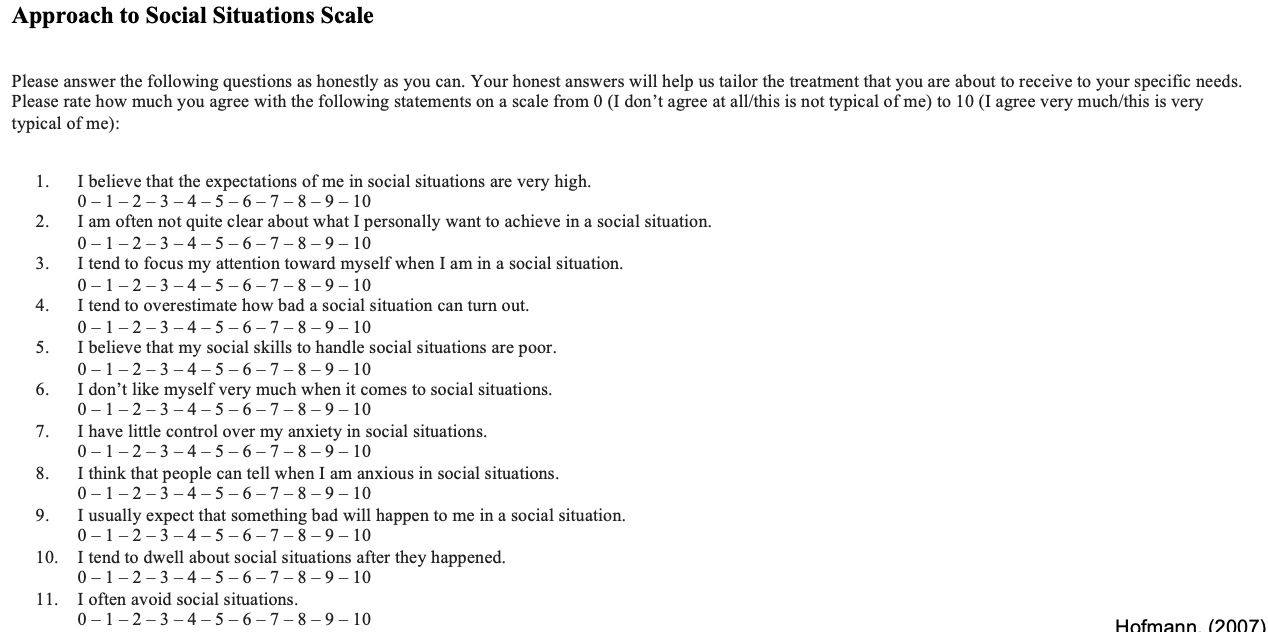
Describe the Exposure Hierarchy-techique
In collaboration with your clients, begin by creating a list of anxiety-producing situations and rate the severity of anxiety they would provoke if confronted.
Typically, a Subjective Units of Distress Scale (SUDS) from 0-100 is used, with 0 equating to no anxiety and 100 equating to the worst-possible anxiety.
You will support your clients as they slowly face these situations, beginning with the least anxiety-producing scenario and ending with the most anxiety-producing scenario
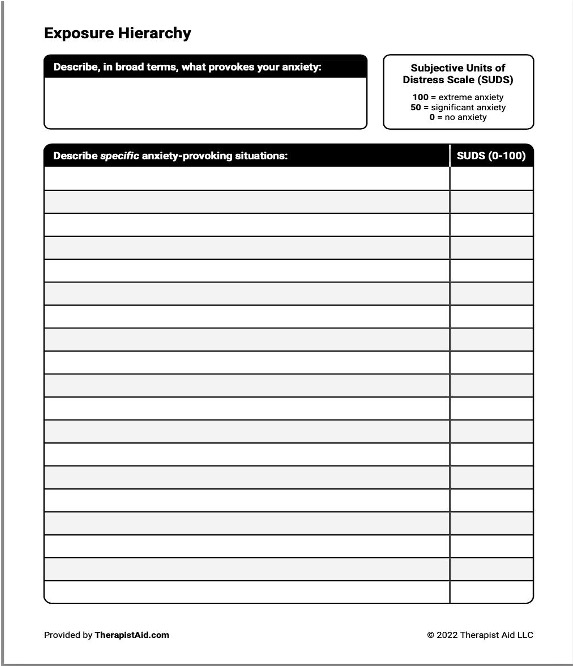
How does the Behavioral Experiment technique for social anxiety look?
